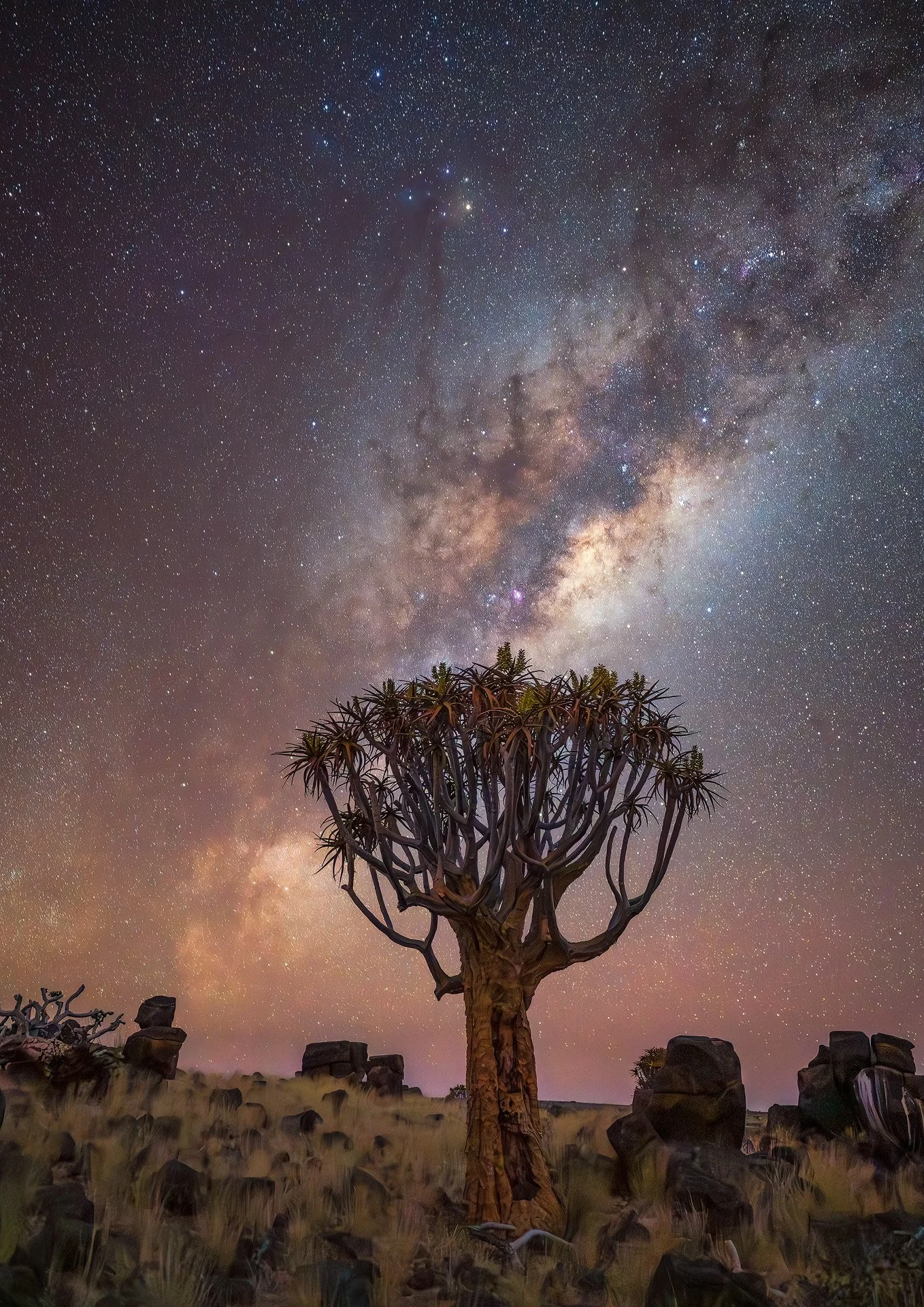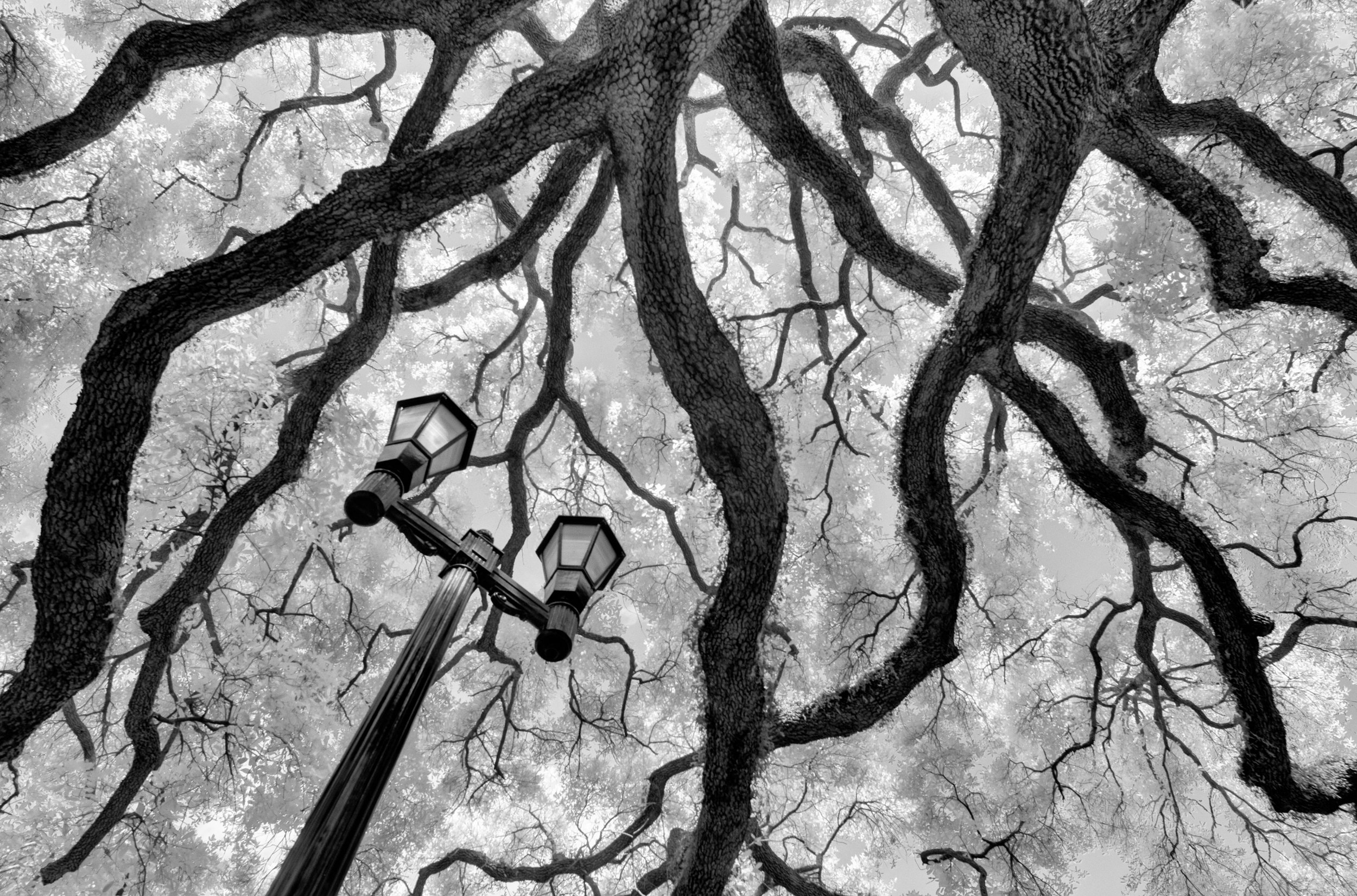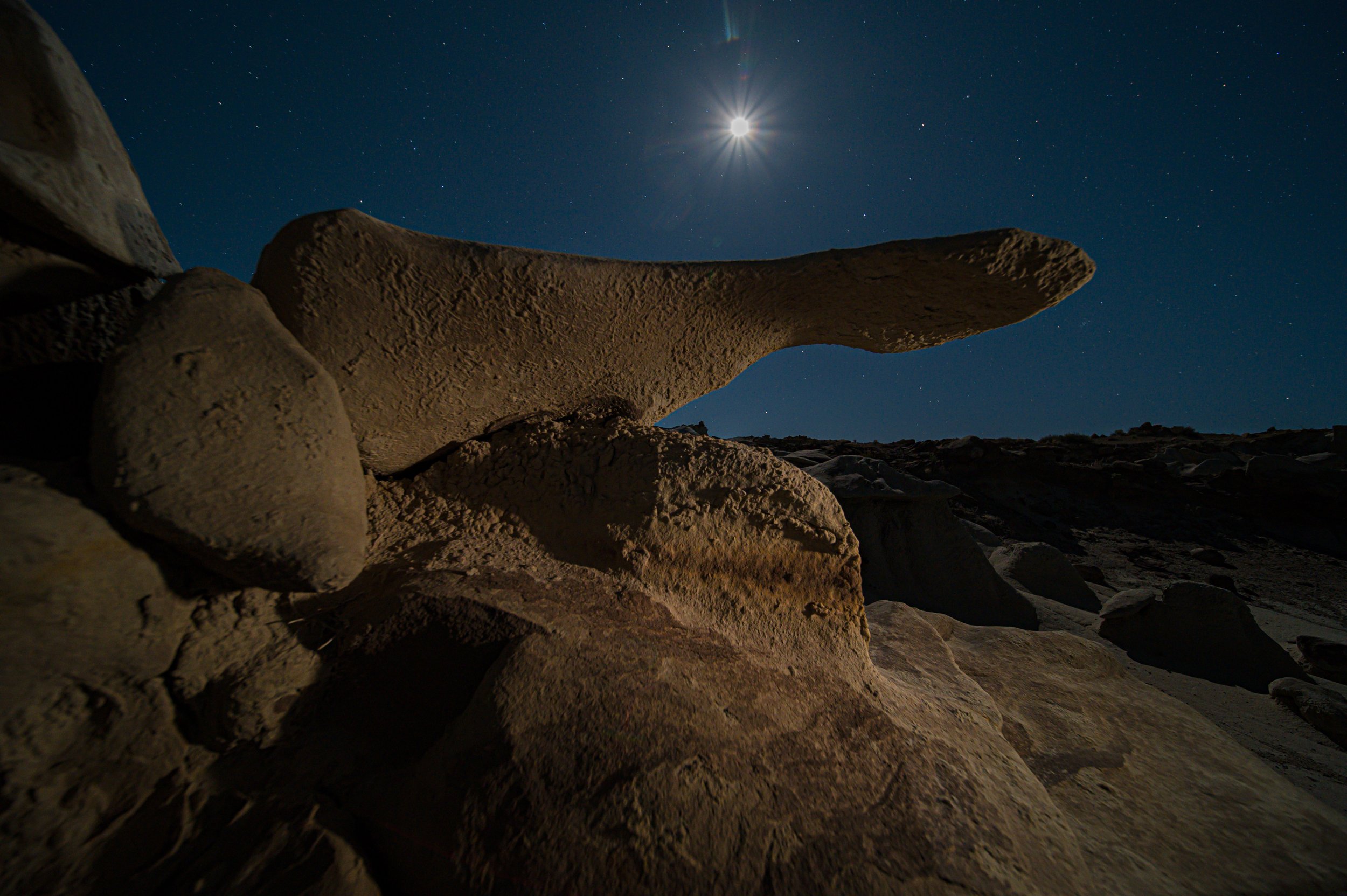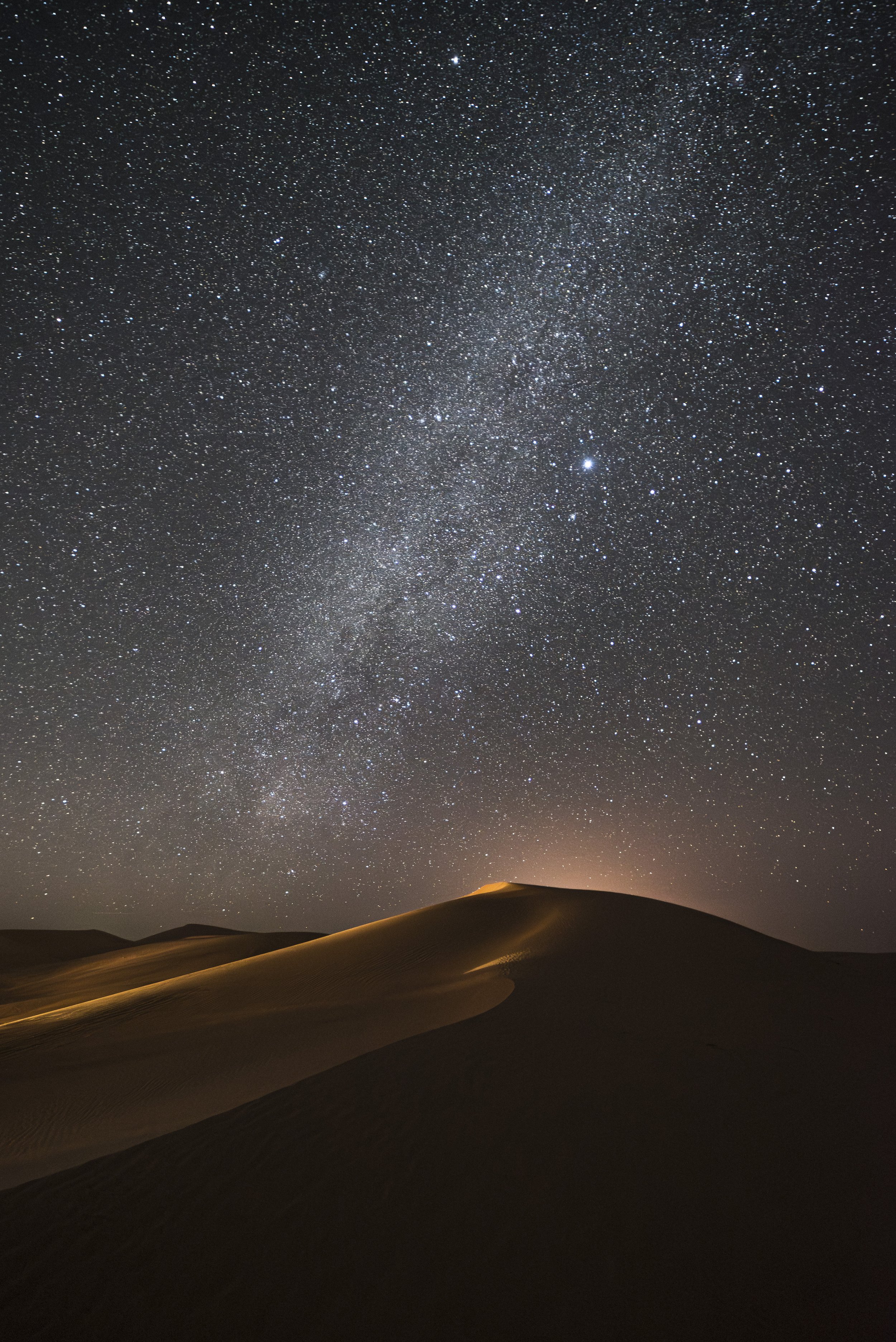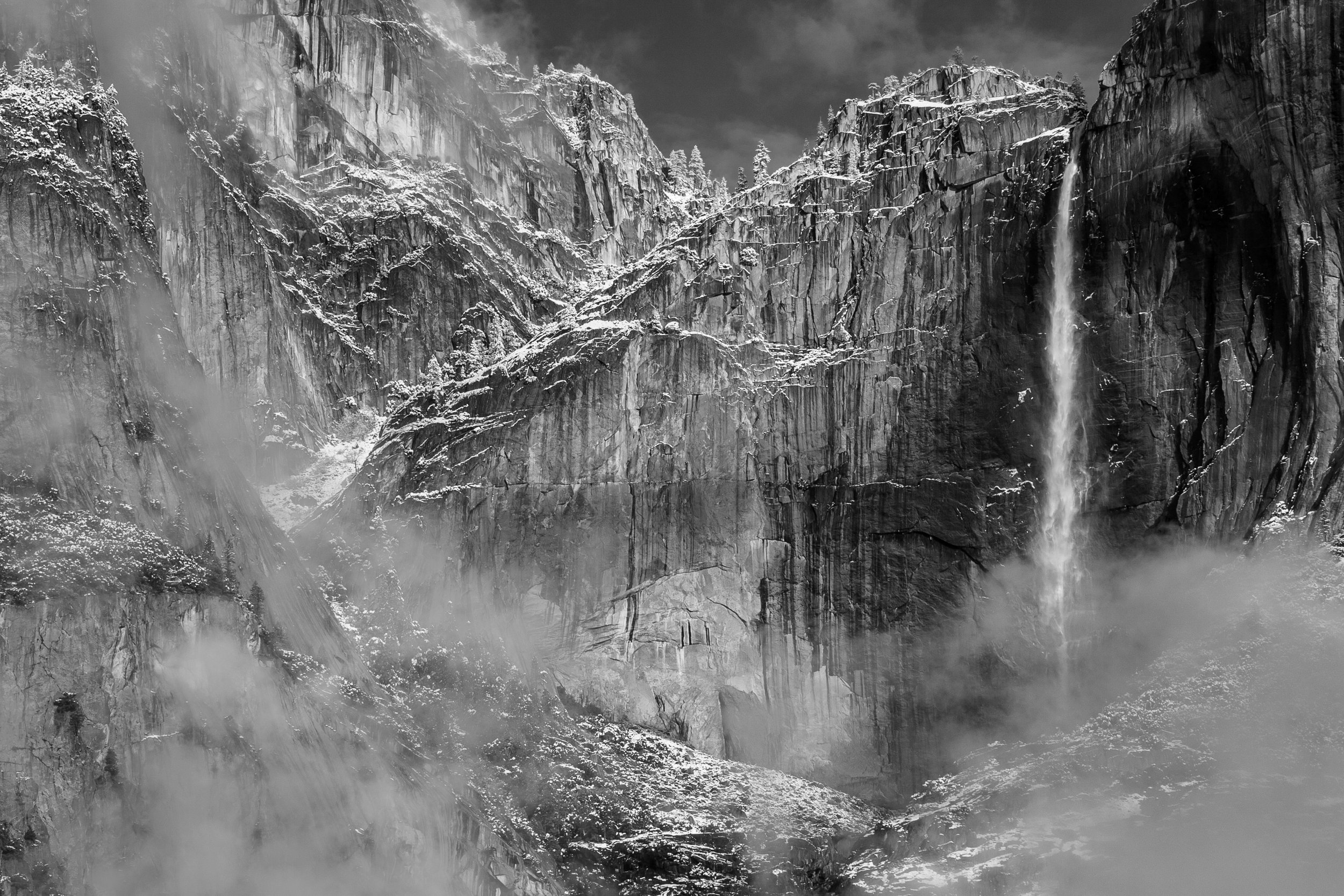In Part I of this article, we learned:
What is high ISO noise?
How to prepare for a high ISO test
How to shoot a high ISO test
Now we're going to learn how to spot disadvantageous noise in our high ISO night photography images. And then I'll show you how to use these boundaries to your advantage.
Pixel-Peeping: Looking at your High ISO Images
Figure 1. 1 second, ISO 51,200, ambient temperature 50 F.
I'll start by using the images referenced in our last post. Figure 1 above is an image that clearly demonstrates a lot of high ISO noise. You can see it clearly as a pattern of dots in the highlight and shadow areas. Boom. Easy to spot, right?
Figure 2. 8 seconds, ISO 6,400, ambient temperature 50 F.
At ISO 6,400 (Figure 2), it's much smoother, and the noise is not as apparent. But it's still there.
Figure 3. 8 minutes, ISO 100, ambient temperature 50 F.
And at ISO 100 (Figure 3), the noise is gone. No surprise here. That's where the highest possible quality is with my camera. Native ISO.
What did I Choose for this Scene?
I am a big fan of dilating time. So I like the ISO 100 shot the best. And that is an aesthetic choice. I'm not concerned about the length of the shutter speed, because there are no stars, so I don't have to choose between star points or trails. And at 8 minutes, the clouds are not totally smeared, yet show enough motion to depict a sense of time passage that I am attracted to. And no noise.
If I had to choose one of the shorter exposure times (because, for example, there were stars in the frame, or the clouds were blurring too much), then I would choose the ISO 800 photo. At ISO 1600, I start to see the noise affect the clouds in a way I don't like. It appears as blotchy areas.
Figure 4. Left: ISO 800 with acceptable noise. Right: ISO 1,600 with unacceptable noise. (Click/tap for larger view.)
Tip:
Use the Compare View ( looks like "X | Y") in Lightroom to zoom in on two photos at the same time and same position in both photos at once.
Juxtaposition for the Win
I made a PSD from my test set by selecting all the frames in Lightroom, right-clicking and choosing "Open as Layers in Photoshop."
Figure 5. You may be familiar with this action from Star Stacking!
Then, so I can show you, I used layer masks to reveal a vertical slice of each layer. This way we can see the changes between each of the exposures side by side (see Figure 6 below). (Power tip: I divided the width by the number of images and added rulers to create evenly spaced slices.)
Figure 6. Finished PSD with layer masks.
So let's look at the highlight transitions:
Figure 7. Highlights crop from left to right: ISO 51,200, 25,600, 12,800, 6400, 3200, 1600, 800, 400, 200 and 100. (Click/tap for larger view.)
As I demonstrated with the X/Y view of ISO 800 and 1,600 in Figure 4, I found a breaking point for quality in the highlights. I do like seeing the whole spectrum of exposures in this crop too (Figure 7). I learned a lot from it.
Figure 8. Midtones crop from left to right: ISO 51,200, 25,600, 12,800, 6400, 3200, 1600, 800, 400, 200 and 100. (Click/tap for larger view.)
In the midtones (Figure 8), you'll notice it's harder to see the noise because the sandy desert floor of Valley of Fire State Park in Nevada has similar natural patterns. If the composition had no sky in the frame, I could choose a shorter exposure. ISO 12,800 looks great in the midtones.
Figure 9. Left: ISO 12,800 with acceptable noise. Right: ISO 25,600 with unacceptable noise. (Click/tap for larger view.)
If you have an interesting sky that requires a short exposure and a foreground that begs for light painting or a longer exposure for car trails, moving water, etc., you can layer the two images together in post. Just shoot them separately and (duh ...) don't move the tripod a single millimeter between frames. It's a common use of imaging technology these days. Purists reject it, but if this is how you make your art, use it to your benefit.
Want to see my original PSD? Download it here. (Careful, it's 2.5 GB!)
When Does High ISO Noise Work?
You'll find that you can tolerate high ISO noise in your night photography when there are patterns that complement the noise pattern. Times when it works are:
Milky Way star points
scenes without gradients of color
black and white post-processing
Figure 10. Devil's Tower, Wyoming. 30 seconds, f/2.8, ISO 400. Ambient temperature approximately 65 F. (Click/tap for larger view.)
In Figure 10, the desert floor has that quality of patterns that complement the noise pattern. It was a warm night in Wyoming, and even at ISO 400 and 30 seconds, there was high ISO noise. But the sky glow and star points mask it pretty well. The noise comes from the ambient summer heat. It's also worth mentioning that it was very dry with lots of dust in the air.
Figure 11. 100 percent view of above photo. Screenshot from Lightroom.
The month doesn't always have to be the determining factor—it could also be the temperature. The image below (Figure 12) was also shot in August, but at Crater Lake National Park in Oregon at a much higher altitude, and lower temperature (closer to 40 F). Comparing ISO 400 at 65 degrees and ISO 6,400 at 43 degrees, you'll see a dramatic difference: much less noise.
Figure 12. Crater Lake National Park, Oregon. 30 seconds, f/2.8, ISO 6400. Ambient temperature approximately 43 F. (Click/tap for larger view.)
And below (Figure 13) is a 100 percent crop to see the magic.
Figure 13. 100 percent view of photo in Figure 12. Screenshot from Lightroom.
Figure 14. Left: ISO 400 at 65 F. Right: ISO 6,400 at 43 F. Both at 100 percent crop in Lightroom. (Click/tap for larger view.)
In Figure 14 the areas of solid color between the star points are much cleaner in the example on the right. Thus (to me) it is more pleasing. For pixel-peeping! Which leads me to my final point:
How are you Finishing your Work?
Intent is everything. If you intend to finish your work by printing it, you should evaluate your tests that same way. Print them at the size you intend to show (or sell!) them. Stand at the appropriate distance for viewing and ask, "Does this look right?"
Remember that getting 3 inches away from a print isn't normal consumption of the product. Normal viewing distance is usually twice the diagonal measure of the print.
If you are going to display your images only on Facebook, Instagram or another social outlet, then your quality standards can frankly be much less. But consider the future of your craft: If you want to sell your work for others to enjoy or invest in someday, why not practice the pursuit of the best quality in the present?
If the answer is a solid, "nope," then don't sweat it. You made an image that makes you happy. Enjoy, and move on to making more images.
Homework
If you're up to it, export one or two images where you pushed the high ISO limit and share them in the comments section. Tell us what you do and don't like about it. And tell us what you learned—namely, where does your camera start to fail? At what temperature? Let's see you stretching your camera to the limits.









